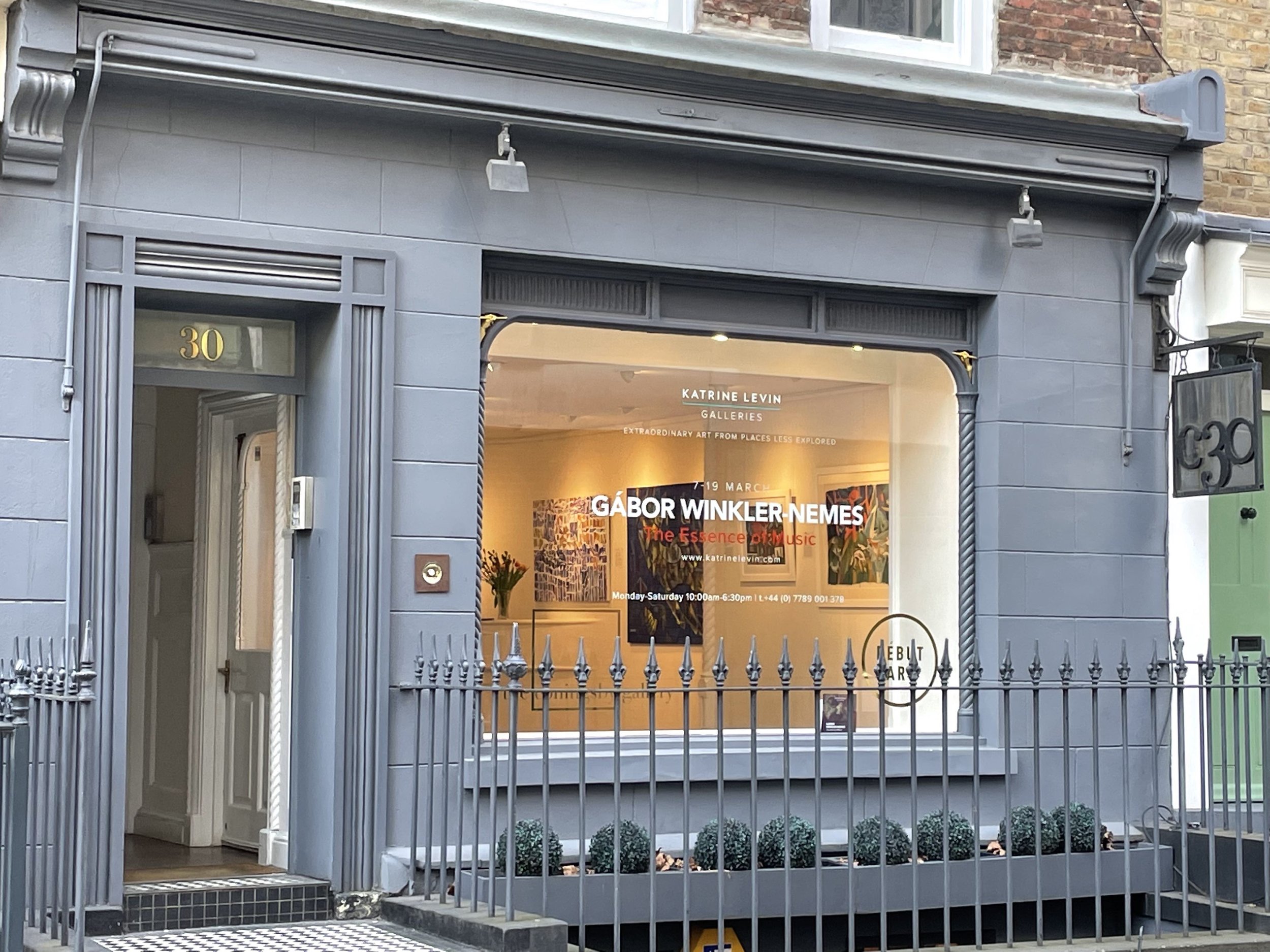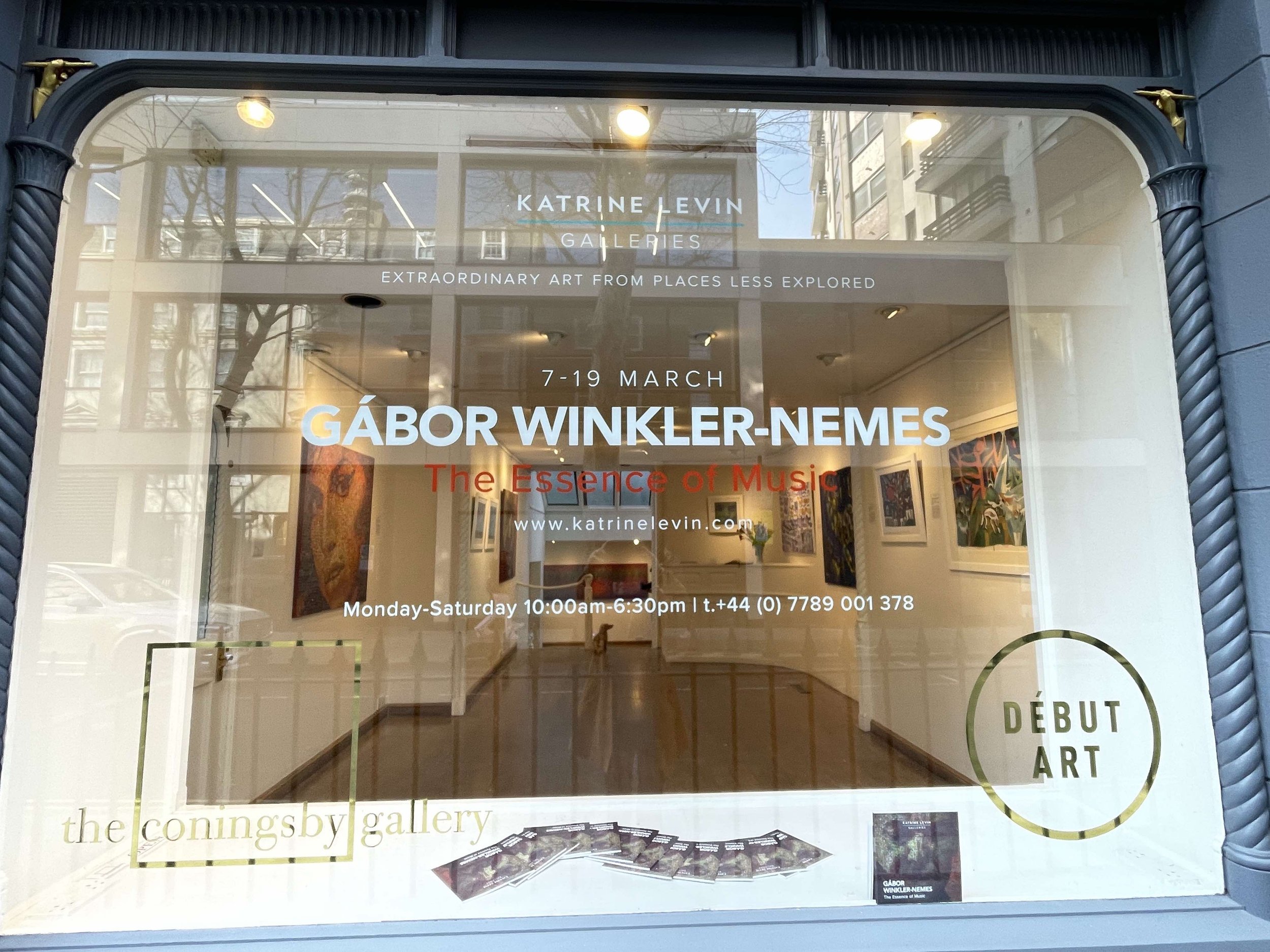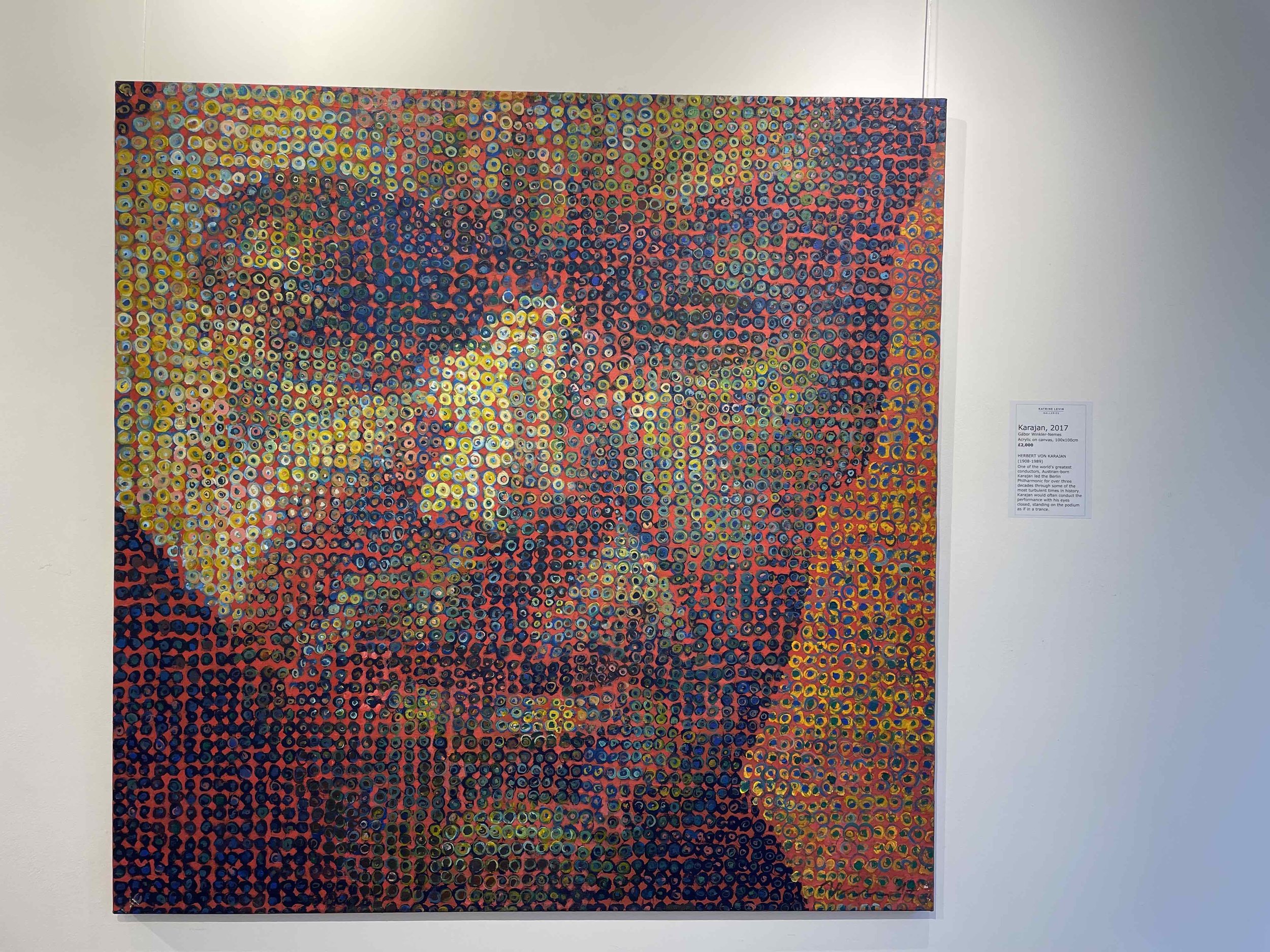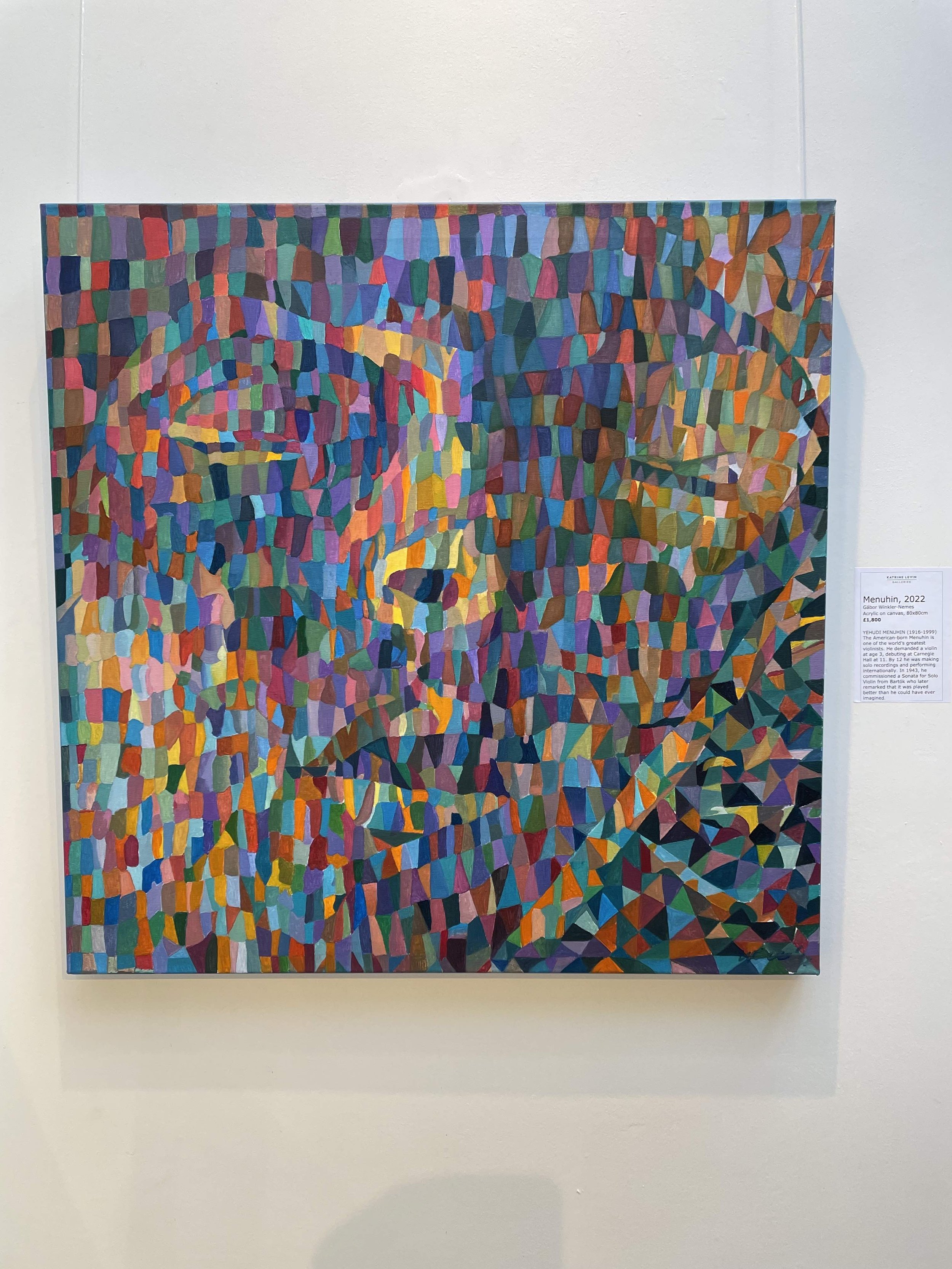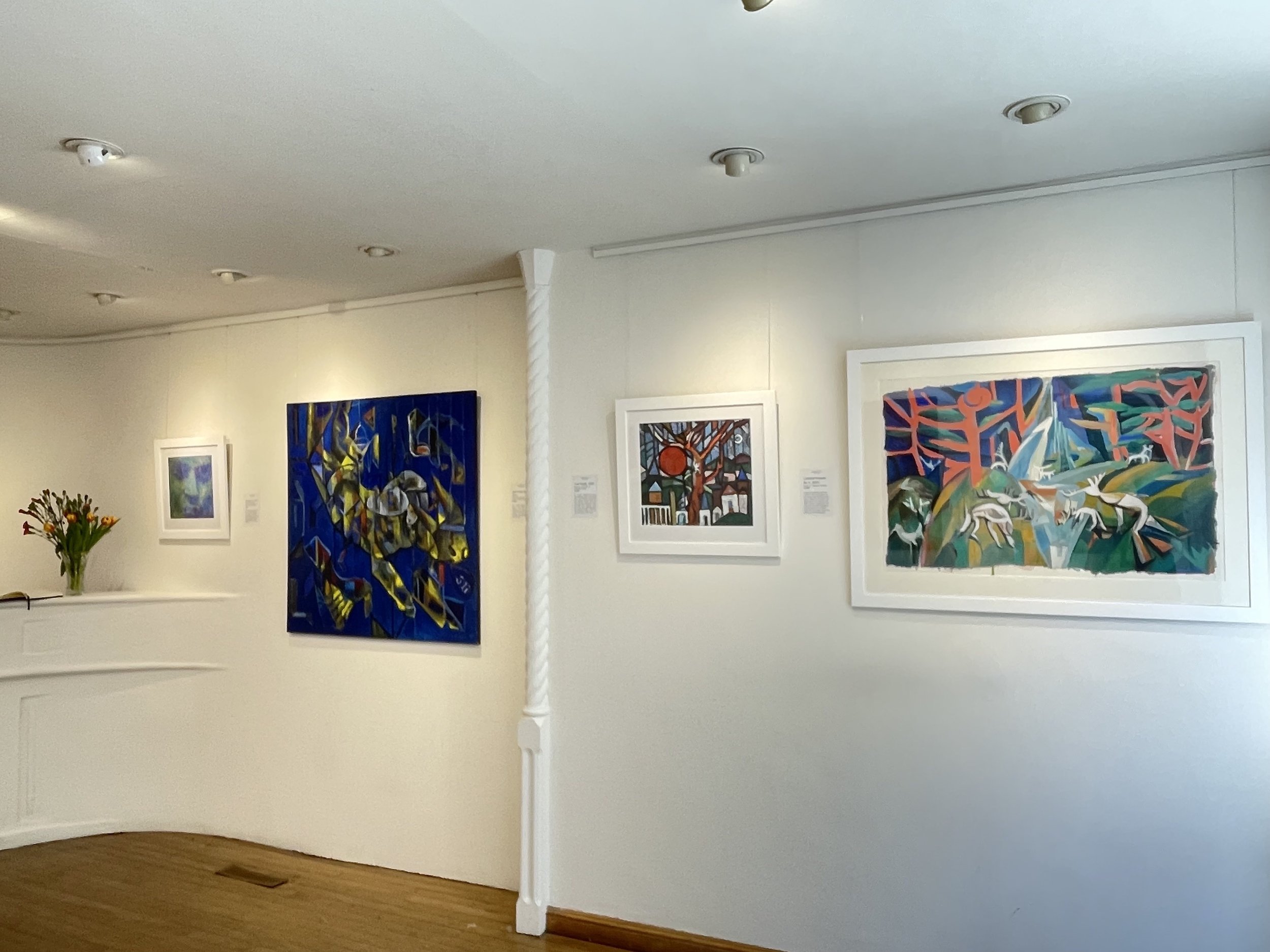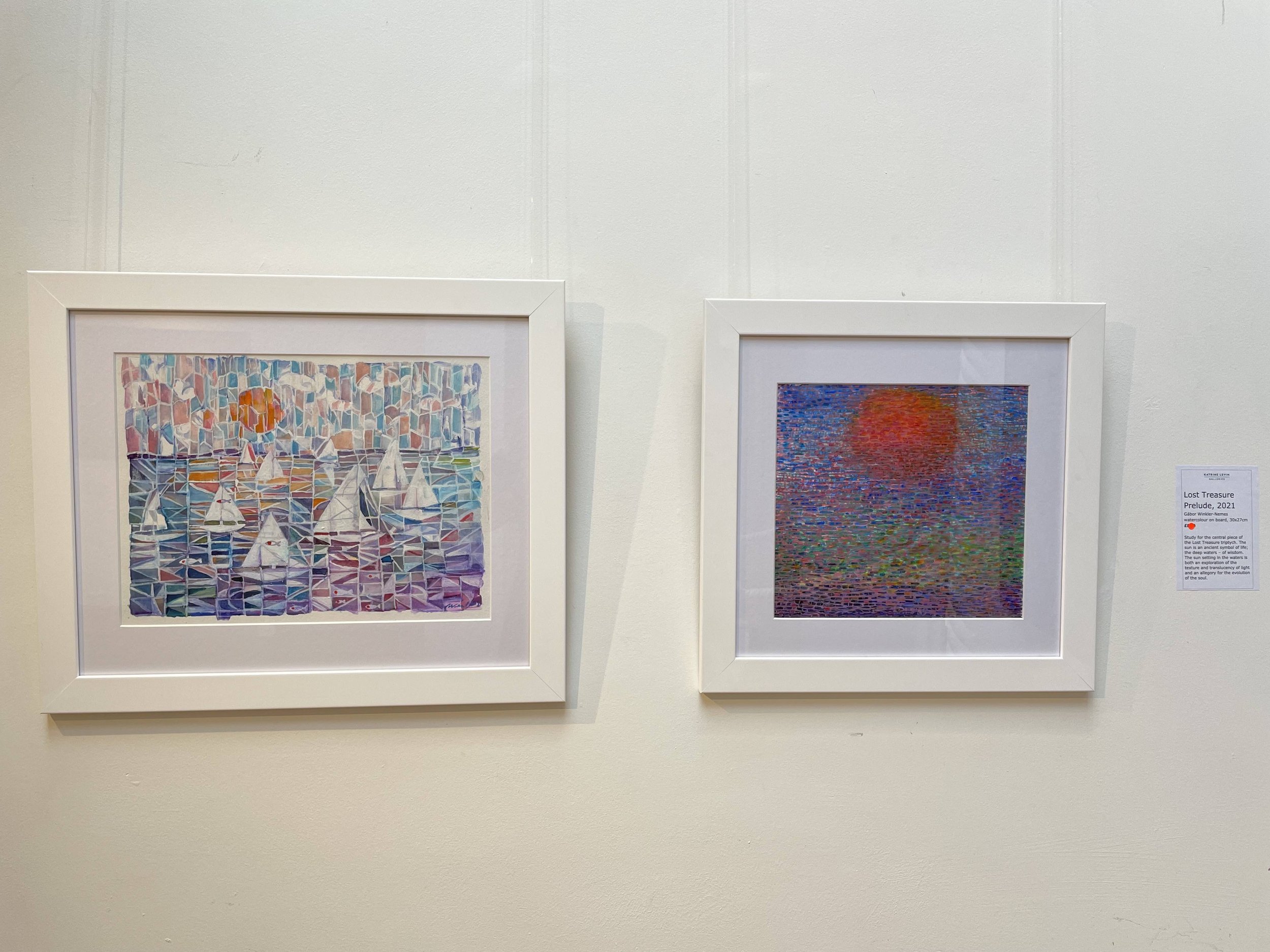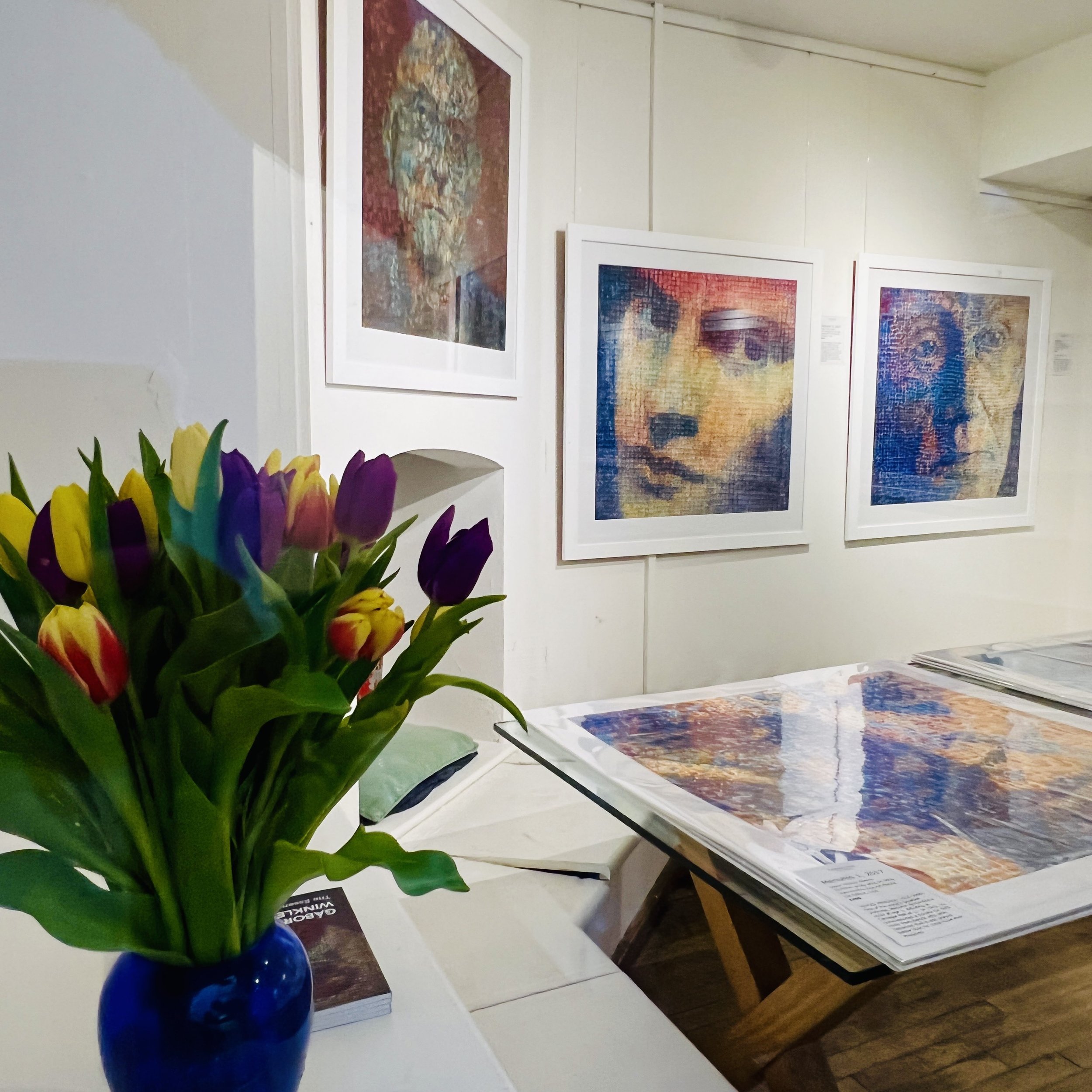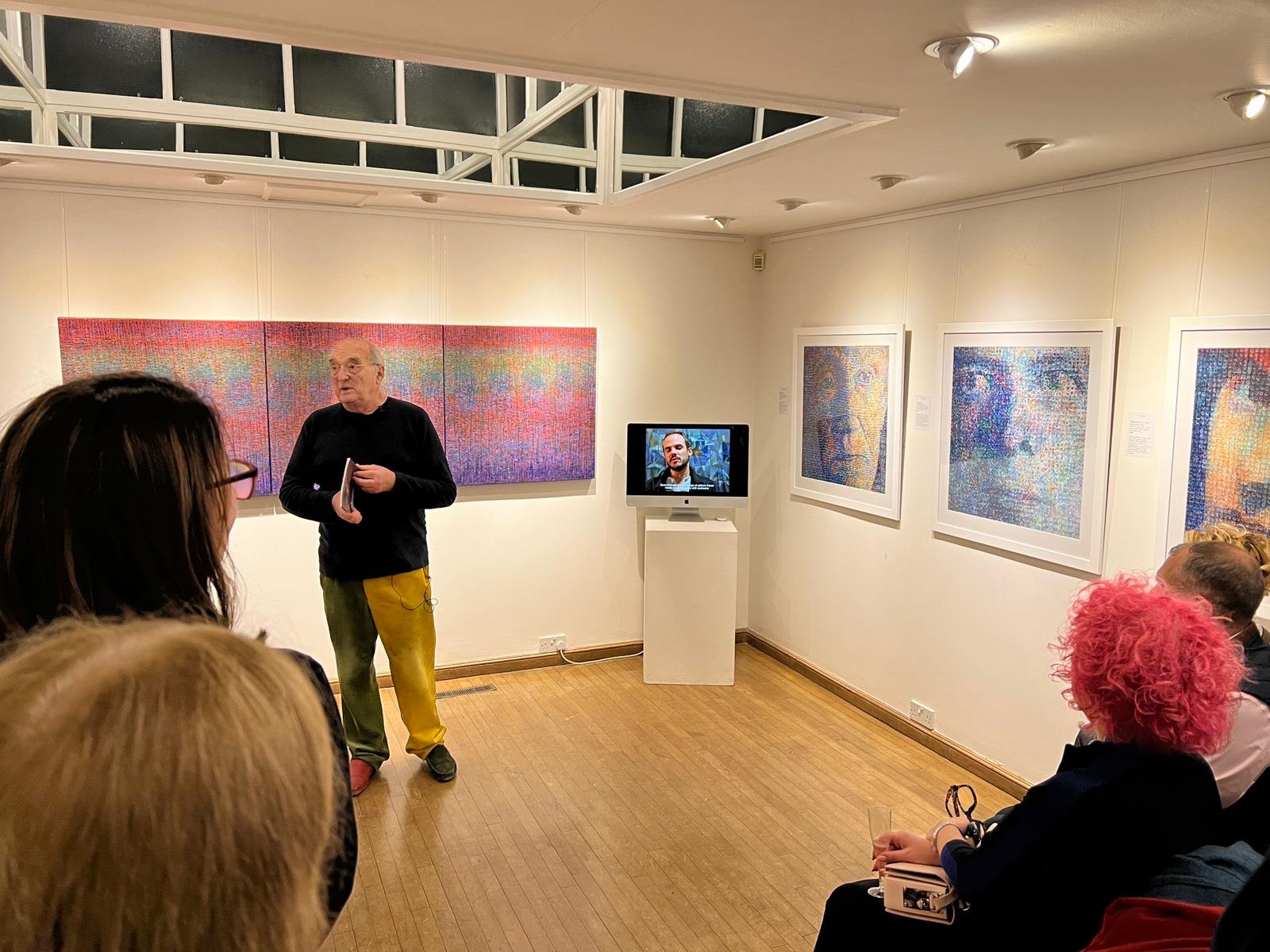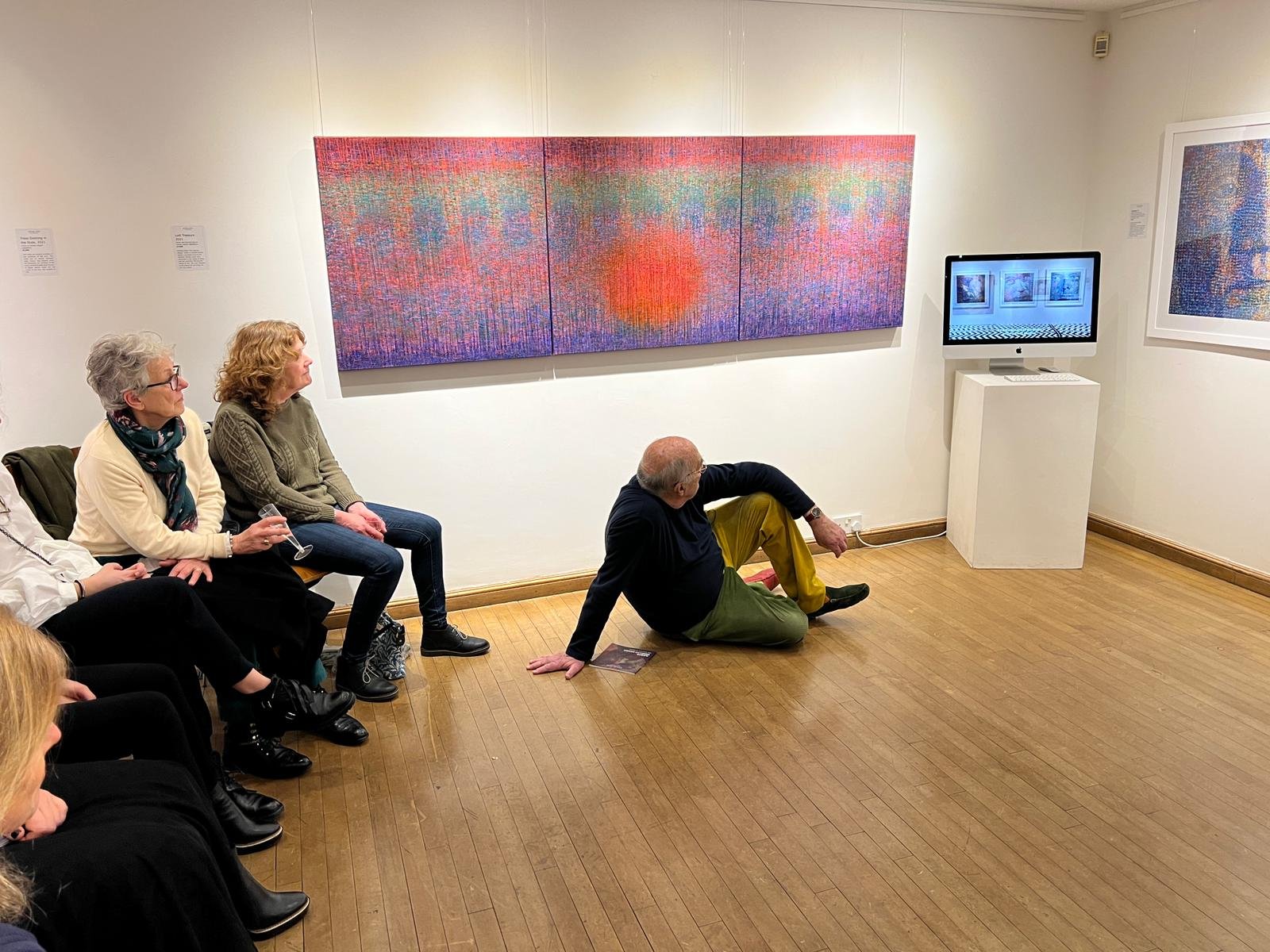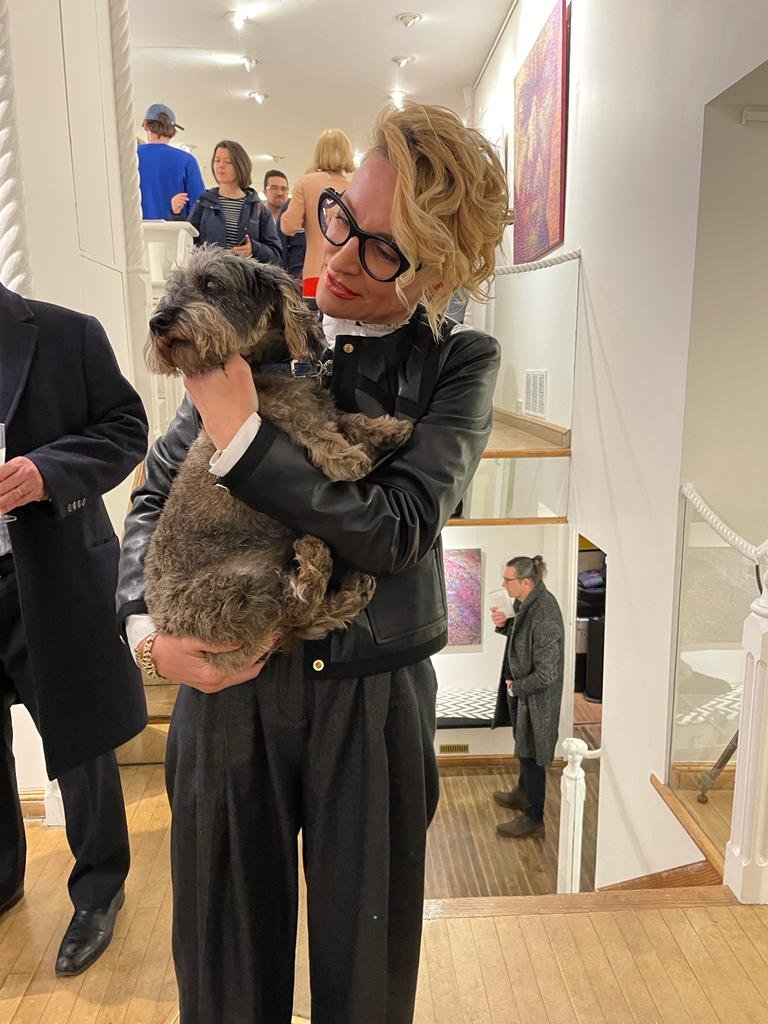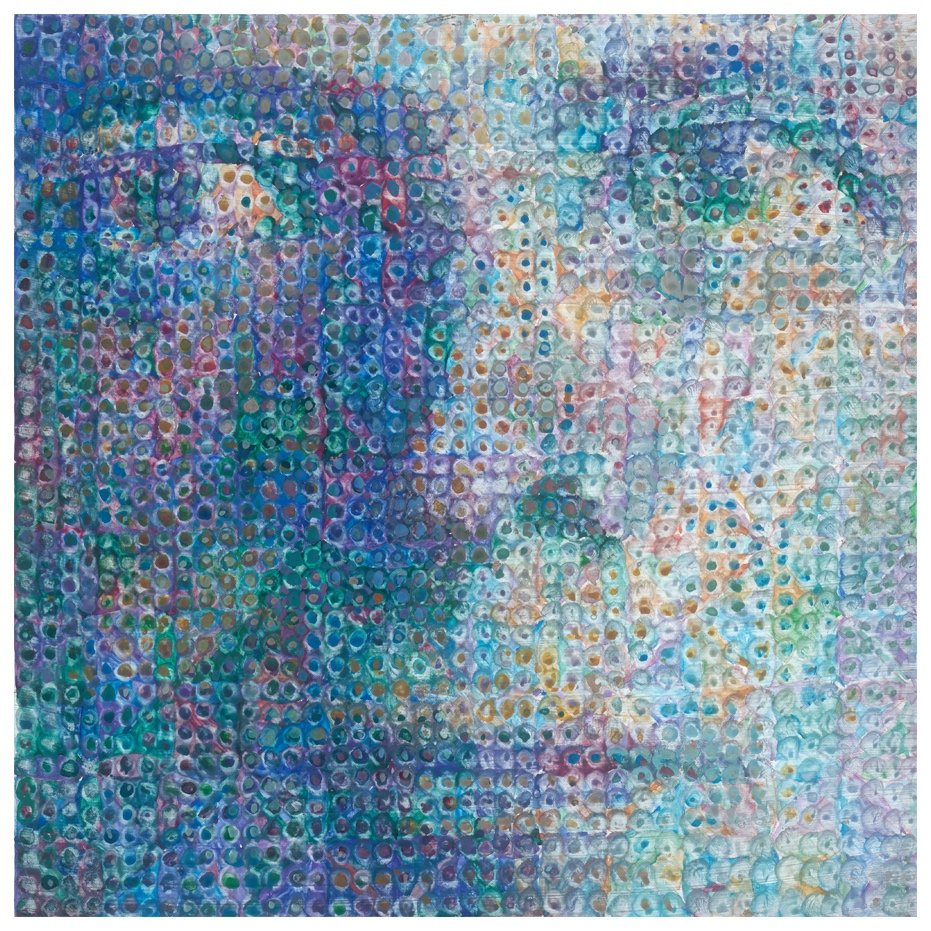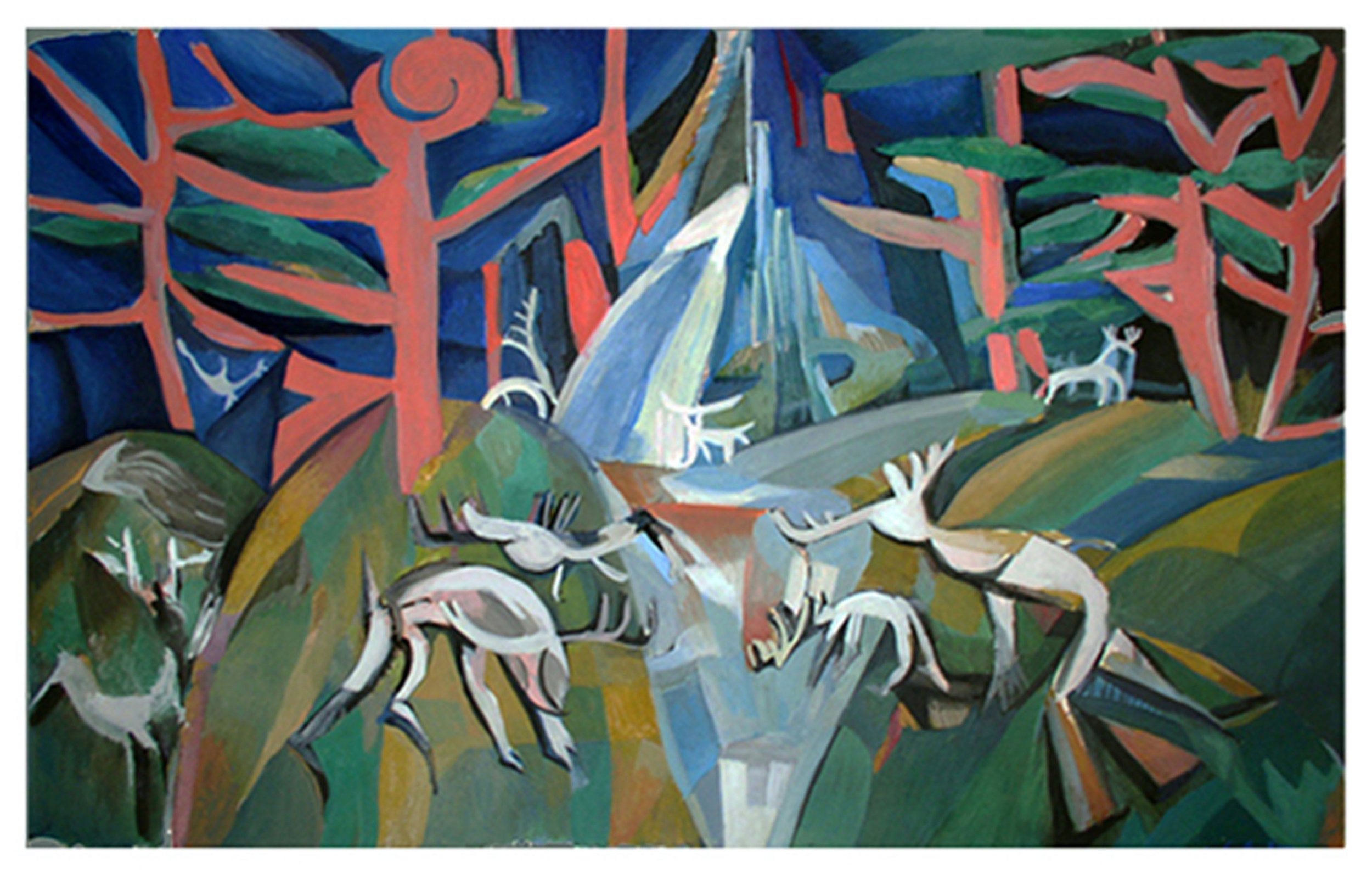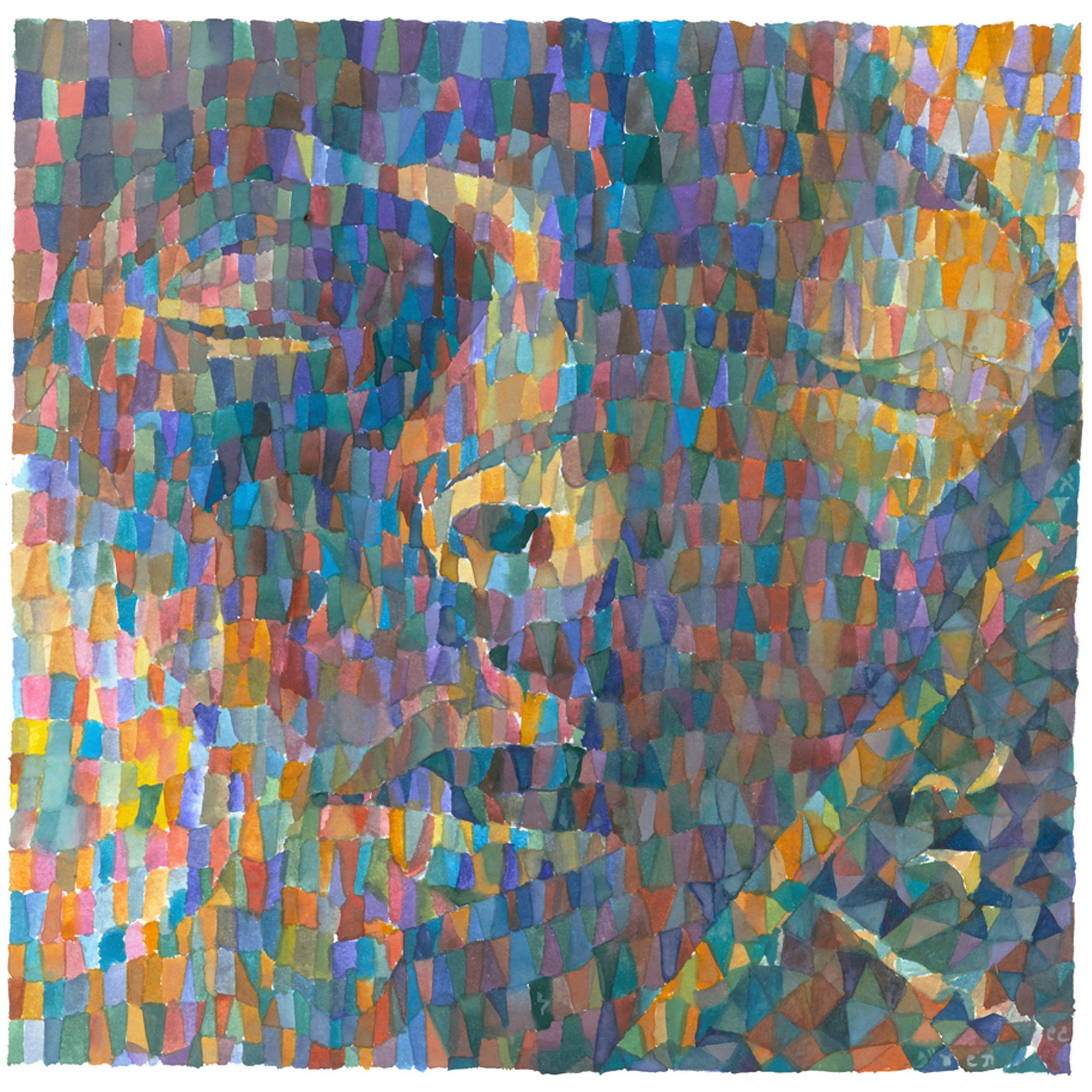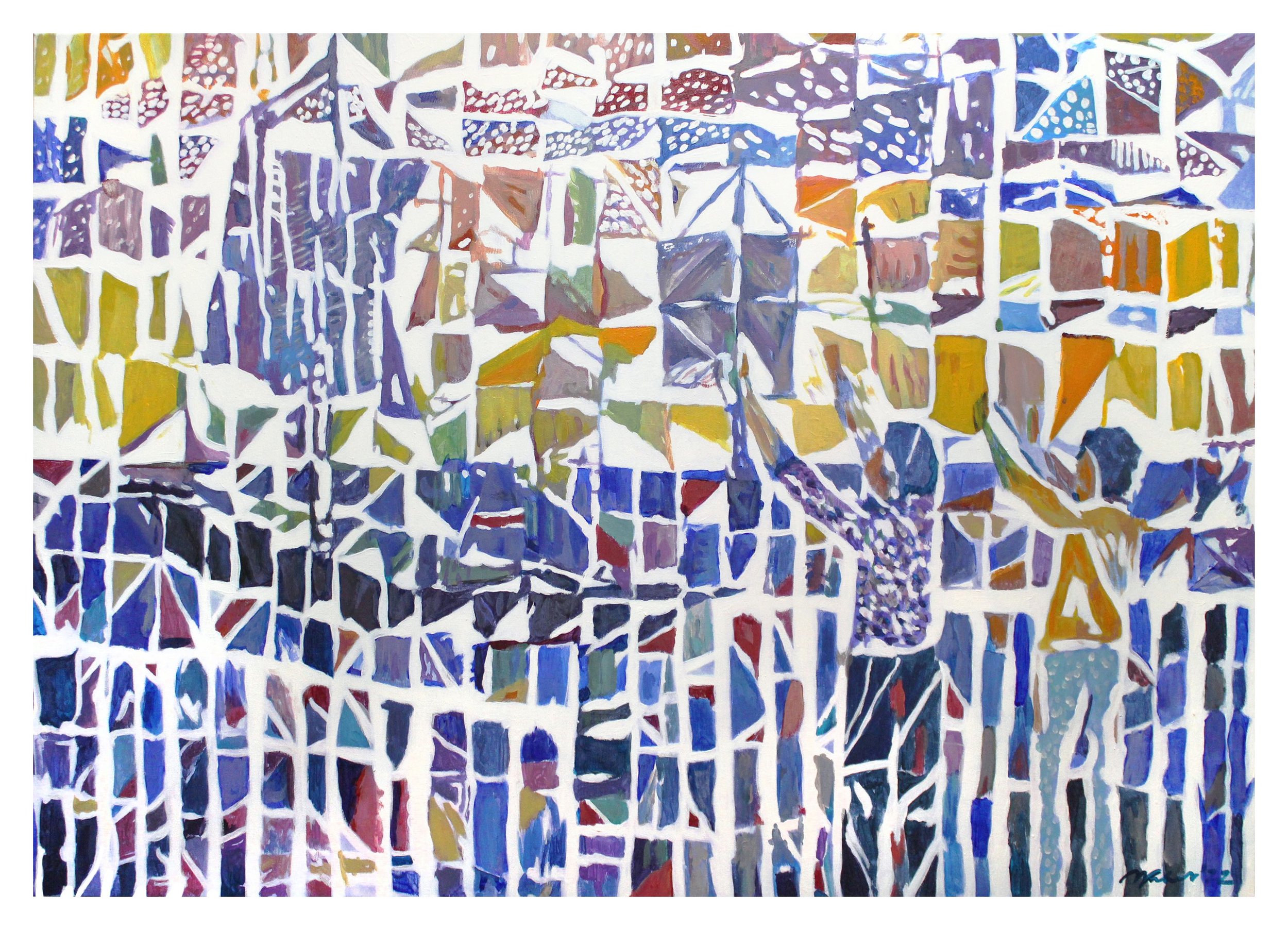“A master of drawing and colour …”
HUNGARIAN GÁBOR WINKLER-NEMES CAPTURES THE ESSENCE OF MUSIC
Music and fine art are often intimate companions, especially through the eyes of Gábor Winkler-Nemes, the Hungarian artist, pianist, synesthet (he sees music as colour), and scholar of ancient languages and cultures. Nemes' colourful mixed media works rendered in a style somewhere between pointilism, pixelation and stained-glass, are also influenced by his experience with stained-glass making and digital film restoration.
Nemes captures the essence of genius musicians such as Menuhin, Rostrapovich, Karajan, Richter, Gould, Oistrakh. Their power is palpable even if you are not close to classical music, their personalities transcend the confines of the canvas.
His allegorical works, on the other hand, emote the rich texture of music through light and colour. Each work has a story, often interlaced with ancient symbols of life and wisdom which are the basis of so much in classical music and contemporary culture.
Nemes’ “Cantata Prelude” captures the essence of Bartók’s “Cantata Profana”, itself based on two Romanian colinde (Christmas carols) about nine brothers turned into deer, an allegory about a return to the purity of nature. The moving “Farewell” tells of letting go along life’s journey. The enigmatic “Bull of the Sky” asks in the background “Hai paura?’ (Are you afraid?), answered by a resounding “Si!” at the front. Who is not afraid of change and does it not sometimes feel like falling blindly from the sky?
Born in 1981, Gábor Winkler-Nemes lives and works in Hungary.
INTRODUCTION BY BRUNO MONSAINGEON
(A concert violinist, Bruno Monsaingeon is an award-winning French film director and author whose works about legendary 20th century musicians including Glenn Gould, Sviatoslav Richter and Yehudi Menuhin - many of which are based on personal association – have gained worldwide acclaim and a Lifetime Achievement Award.)
Gábor Winkler Nemes is first of all a master technician of drawing and colour. But beyond that indisputable fact, he has been exposed on the one hand to an unbelievably broad pictorial, literary and musical spectre of cultures. And on another, he has indefatigably explored Hungarian, English, German, French, Christian, Jewish and ancient Egyptian traditions. All of these are reflected in his painting style, both intensely personal and eclectic.
2022 LONDON EXHIBITION HIGHLIGHTS
